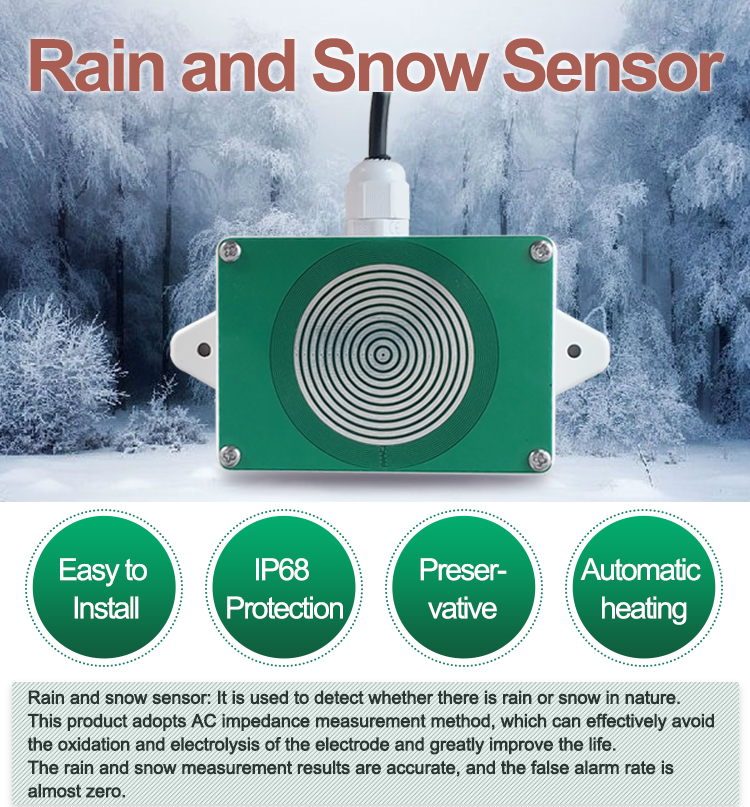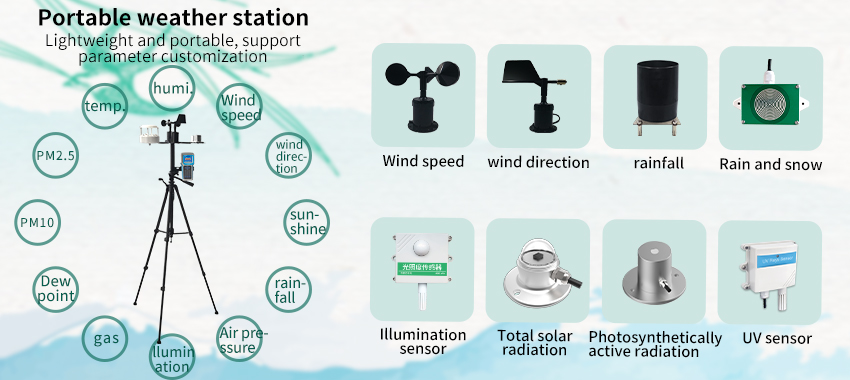The role of rain and snow sensors
The rain and snow sensor is a qualitative measuring device for measuring whether it rains or snows outdoors or in nature. It is equipped with imported intelligent microprocessors and advanced detection circuits. The surface adopts grid electrodes and uses the conductive characteristics of water. When there is rain or snow When it falls on the sensing zone, it will cause the electrode to short-circuit. At this time, the device can detect rain or snow and send an alarm message to the manager as soon as possible. It can be widely used in the qualitative measurement of the presence or absence of rain and snow in the environment, greenhouses, farming, construction, buildings, etc. It is safe and reliable, beautiful in appearance, and easy to install.
JXCT rain and snow sensors can work in an environment of -40℃~80℃. In order to prevent the surface of rain and snow transmitters from freezing and condensing in a low-temperature environment, the rain and snow sensor is designed with an automatic heating function. Equipped with a temperature and humidity sensor.
When the temperature and humidity sensor detects that the ambient temperature is lower than 15°C, the device will automatically turn on the heating function, and the heating function will be turned off when the device temperature reaches 40°C. At the same time, users can also reset which temperature to start heating according to the specific situation of the place of use. It should be noted that the temperature should be strictly controlled within 40 ℃ during heating to prevent dry burning from causing over-oxidation and affecting the service life.

Precautions for the use of rain and snow sensor
1. In autumn and winter, due to the cold weather, water vapor will condense into fog or frost and fall on the sensor’s sensing area. After they melt into water, they will trigger the sensor of the transmitter, falsely reporting it as snowy weather. In order to avoid such situations, the rain and snow transmitter is used flexibly, and its sensitivity value can be adjusted according to the specific situation. The sensitivity value is inversely proportional to the actual sensitivity. The larger the sensitivity value, the less sensitive the device detection, the smaller the sensitivity value, the more sensitive the device detection. To avoid false alarms, the general sensitivity value is set to 800 by default at the factory.

2. Once the rain and snow sensor detects rain or snow, it will send an alarm message to the manager as soon as possible. Therefore, during a period of rain or snowfall, it is annoying to continuously send warning messages to managers. To solve this trouble, the user can set the alarm and reset the delay through the device software. If we set the device’s alarm and reset the delay value to 10S, then it will output alarm information when the duration of rain and snow is detected exceeds 10S, if the duration of rain and snow is detected is less than 10S, the device It is considered that no rain or snow is detected; at the same time, the same is true when rain and snow return to a normal state.

wPortable weather station
Portable weather stations are used to measure atmospheric temperature, relative humidity, air pressure, wind speed and direction, solar radiation, illumination, rainfall, soil temperature and humidity and other parameters. Factory direct sales, support according to the needs of customization and matching.